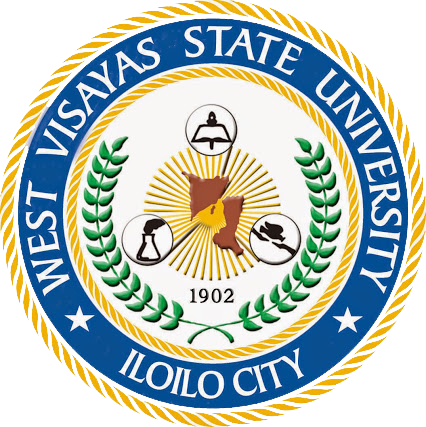Luzon wart frog (Fejeverya vittigera): Teaching-learning science for ecological justice
| dc.contributor.advisor | Handa, Vicente C. | |
| dc.contributor.author | Zapanza, Glaisa June V. | |
| dc.date.accessioned | 2024-07-24T00:59:09Z | |
| dc.date.available | 2024-07-24T00:59:09Z | |
| dc.date.issued | 2022-12 | |
| dc.identifier.citation | Zapanza, G. J. V. (2022). Luzon wart frog (Fejeverya vittigera): teaching-learning science for ecological justice. [Master's thesis, West Visayas State University]. WVSU Institutional Repository and Electronic Dissertations and Theses PLUS. | en |
| dc.identifier.uri | https://hdl.handle.net/20.500.14353/555 | |
| dc.description.abstract | Luzon Wart Frog (Fejevarya vittigera) is a native of the Philippines that inhabits rice fields, ponds, lakes, and wooded areas at low elevations. They inhabit heavily disturbed environments, depleted streams, and flooded roadside ditches. Amphibians play an important role in ecosystems, usually in the middle of trophic networks. However, they are one of those facing the negative effects of global change. They are often undervalued by society, not realizing their contribution to maintaining ecological balance. With this, the study aimed to know the learners' eco-justice perspective on rice-field frogs. The primary participants of the study included a researcher and the 15 participants of Barangay A in the 5th district in a Philippine province who were purposively chosen. Secondary participants of the study included barangay officials, farmers, teachers, other students and people in the community who participated in the exhibit and on the awareness campaign in protecting the rights of native frogs to live. The participants were engaged in learning with Luzon Wart Frog (Fejevarya vittigera) physical characteristics, life cycle, mode of reproduction, threats and ways to protect it. Participant's responses were described in details as stated in Chapter Four. Participatory Action Research (PAR) was adopted in this study because it created structures that allowed researchers to take part in decisions about the study's goals and the direction of their literacy program of learning. The sources of data include transcripts of individual interviews, science journal notebooks, records of focus group discussions, field observation notes, and photographs. Narrative analysis was employed to clearly represent the data and results of the study. Participants work collaboratively with their co-participants in doing the given activities. This study also determined a science concept from rice-field frogs and how these amphibians can be protected from an eco- justice perspective by the participants. It was found out in the study that participants were able to conceptualize and implement an integrated science curriculum focusing on rice field frog as a context for learners to learn about science through hands-on observation and recognition of the importance of frogs in the ecological community. It has been said that to protect an endangered species, people require an awareness of the potential threats. In addition, an ecological balance drew positive attention and developed an understanding of why frogs need protection. Meanwhile, it can be found in the study that there is a difference between cane toads and rice-field frogs. The study further indicated that cane toads should not be protected since they are considered an environmental disaster while the Luzon wart frogs were an amphibian that controlled pests in the ecological community. Subsequently, the team sat down for the discussion of learned concepts, shared experiences and insights which then became the basis in creating a lesson exemplar. Through the FGD, selected individual interviews, experiences and ideas from participants were unlocked. | en |
| dc.format.extent | xv, 147 p. ill.(col.). | en |
| dc.language.iso | en | en |
| dc.publisher | West Visayas State University | en |
| dc.subject | Rice-field frog | en |
| dc.subject | Cane Toads | en |
| dc.subject | Eco-justice | en |
| dc.subject | Luzon wart frog | en |
| dc.subject | Native frogs | en |
| dc.subject | Participatory action research | en |
| dc.subject | Ecological justice | en |
| dc.subject | Environmental deterioration | en |
| dc.subject | Environmental awareness | en |
| dc.subject | Habitat degradation | en |
| dc.subject | Natural bio-indicators | en |
| dc.subject | Invasive species | en |
| dc.subject | Eco-justice oriented education | en |
| dc.subject | Teaching-learning integrated science | en |
| dc.subject | Agro-ecosystem science | en |
| dc.subject | Anurans | en |
| dc.subject | Species protection | en |
| dc.subject | Conservation education | en |
| dc.subject | Amphibians species | en |
| dc.subject | Ecojustice curriculum | en |
| dc.subject | Non-native species | en |
| dc.subject.lcsh | Ecological Systems Theory | en |
| dc.subject.lcsh | Bufo marinus | en |
| dc.subject.lcsh | Environmental justice | en |
| dc.subject.lcsh | Environmental issues | en |
| dc.subject.lcsh | Environmental degradation | en |
| dc.subject.lcsh | Introduced organisms | en |
| dc.subject.lcsh | Environmental education | en |
| dc.subject.lcsh | Community-based research | en |
| dc.subject.lcsh | Anura | en |
| dc.subject.lcsh | Wildlife conservation | en |
| dc.subject.lcsh | Conservation of natural resources--Study and teaching | en |
| dc.subject.lcsh | Science--Study and teaching | en |
| dc.title | Luzon wart frog (Fejeverya vittigera): Teaching-learning science for ecological justice | en |
| dc.type | Thesis | en |
| dcterms.accessRights | Limited public access | en |
| local.subject.scientificname | Rhinella | en |
| thesis.degree.discipline | Elementary Science | en |
| thesis.degree.grantor | West Visayas State University | en |
| thesis.degree.level | Masters | en |
| thesis.degree.name | Master of Arts in Education | en |
| dc.contributor.chair | Tingson, Lea C. | |
| dc.contributor.committeemember | Magno, Ricky M. | |
| dc.contributor.committeemember | Jaudian, Sharon M. |
Files in this item
This item appears in the following Collection(s)
-
2. Master's Theses [97]





